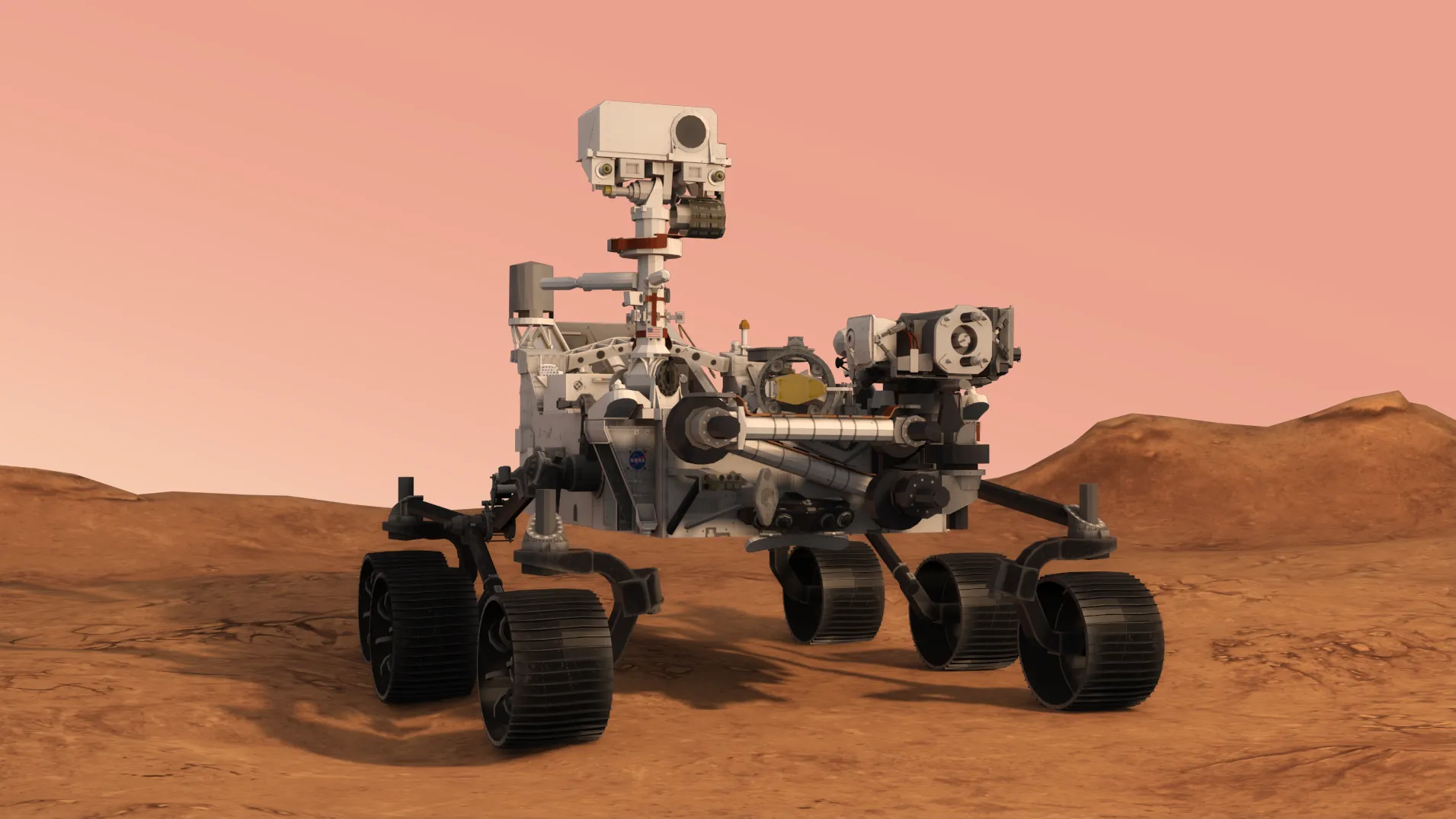Perseverance ventured into the vast expanse of the Solar System, ultimately touching down on Mars in February 2021.
Since its arrival, spanning 1000 days of tireless exploration, the rover has diligently gathered 23 samples from various geological sites within the Jezero Crater. This location, once a habitat for an ancient lake, stands as a promising ground for uncovering traces of ancient life, potentially fossilized.
The journey commenced on July 30, 2020, as the mighty Atlas V-541 rocket thundered away from Cape Canaveral in Florida, carrying the intrepid Perseverance rover bound for Mars.
Approximately seven months later, the rover reached its destination, braving the Martian atmosphere and executing a flawless landing utilizing a sophisticated sequence involving parachutes, retrorockets, and a groundbreaking sky crane maneuver for a gentle descent from a hovering platform.
Perseverance’s primary objective on the Martian terrain revolves around the comprehensive exploration of its geology, climate, and atmospheric conditions, laying the groundwork for future human endeavors in space exploration.
The selection of the Jezero Crater as the landing site stemmed from prior orbital examinations, revealing compelling evidence of an ancient lake that once filled its basin.
Water stands as a pivotal component in the evolution of life, thus the presence of a body of water enhances the likelihood of life’s emergence. Delving into the rocks within this crater is akin to flipping through the pages of history, preserving remnants of ancient life forms and the environmental contexts of bygone eras.
The crater’s formation, like many others in the Solar System, traces back to some form of impact event. In the case of Jezero, an asteroid collision roughly 4 billion years ago sculpted its rugged contours.
Upon arrival at the crater, the rover swiftly encountered a floor comprised of igneous rock, forged from vast subterranean magma chambers and thrust to the surface by volcanic activity.
Subsequent discoveries unveiled a spectrum of rock types, ranging from sands to muds, offering compelling evidence of Mars’ aqueous past.
As Perseverance marked its 1000-day milestone of Martian exploration, it diligently collected rock samples, securely packaging them for future retrieval, and largely completing its survey of the ancient lakebed.
Among these samples, one dubbed ‘Lefroy Bay’ harbors fine-grained silica, a substance abundant on Earth renowned for its fossil-preserving properties. Another sample boasts phosphate, a compound intimately linked to biological processes on Earth. Both specimens also contain carbon, offering valuable insights into the environmental conditions prevailing during their formation.



